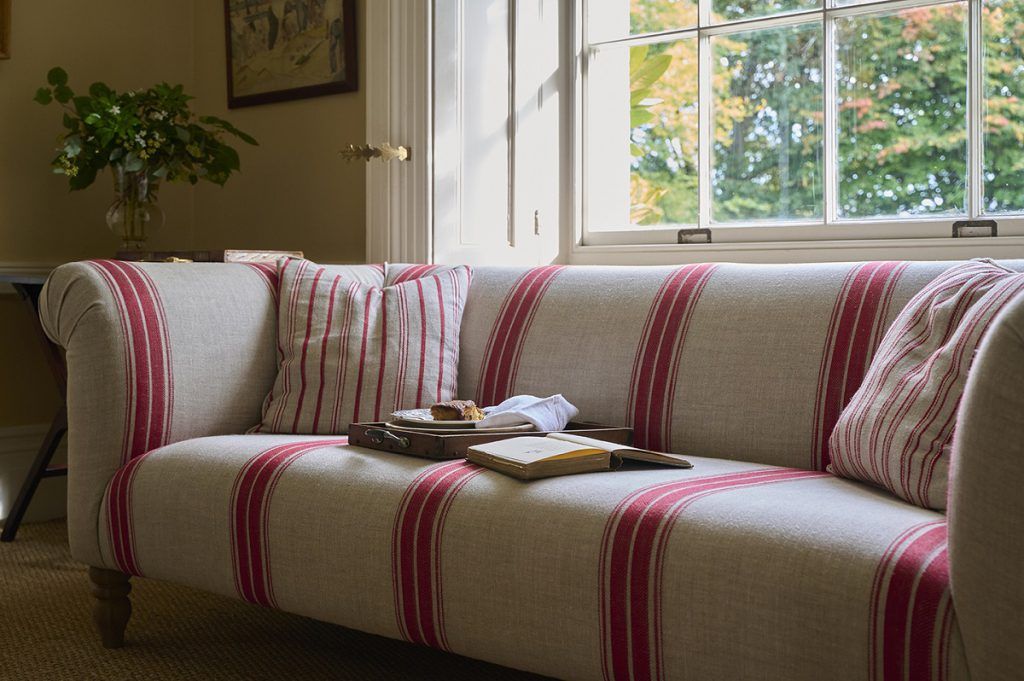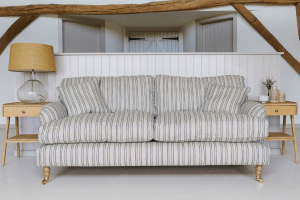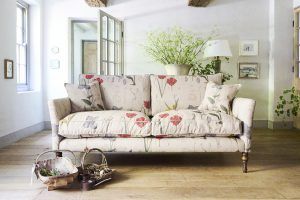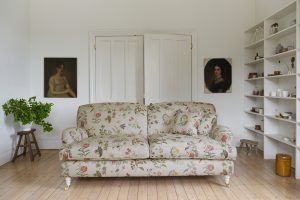Our handcrafted furniture is designed to stand the test of time. We play our part by ensuring the highest quality build and upholstery by our in-house furniture makers and careful delivery by our diligent delivery team.
Once in your home, proper maintenance can help to ensure your upholstered furniture remains as beautiful and comfortable as the day it arrived. This care and maintenance guide is your resource in looking after your handcrafted Sofas & Stuff piece, helping you protect and prolong the life of your cherished furniture.
When your sofa arrives
After your sofa has been delivered and unwrapped, it’s ready to enjoy immediately. However, if you notice that the cushions feel a little firmer than expected, don’t worry; this is simply because the filling can take some time to settle.
After around 6 weeks of plumping and usage, they will naturally soften up and become as comfortable as you’d hoped.
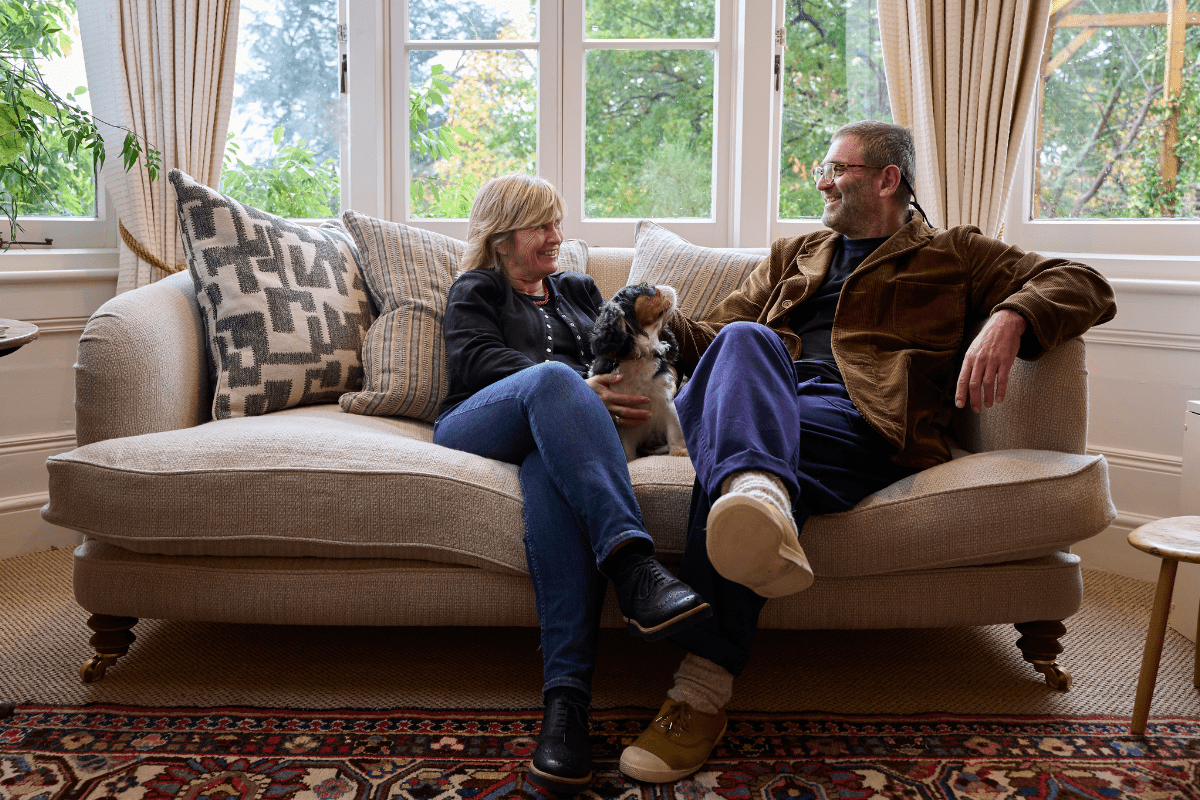
Understanding your sofa’s upholstery
Your chosen fabric can make all the difference in the appropriate care and maintenance for your upholstered furniture pieces. Some textiles require a touch more care than others, while others are lower maintenance.
Your lifestyle and available time should play into your upholstery decision and how you clean your fabric sofa. Once you have made your selection, keep in mind the below guidance for specific fabric care:
Linen
Linen upholstery needs a little extra care and dedication to keep it looking its best – however, its natural beauty and elegance surely make it worth your while.
How to clean and care for linen sofas: Regular, careful vacuuming will get rid of dust and crumbs, preventing the fabric from dulling. Due to its natural absorbency, the best course of action for spills is to contact an upholstery cleaning specialist. Linen is particularly prone to fading if positioned in direct sunlight for extended periods.
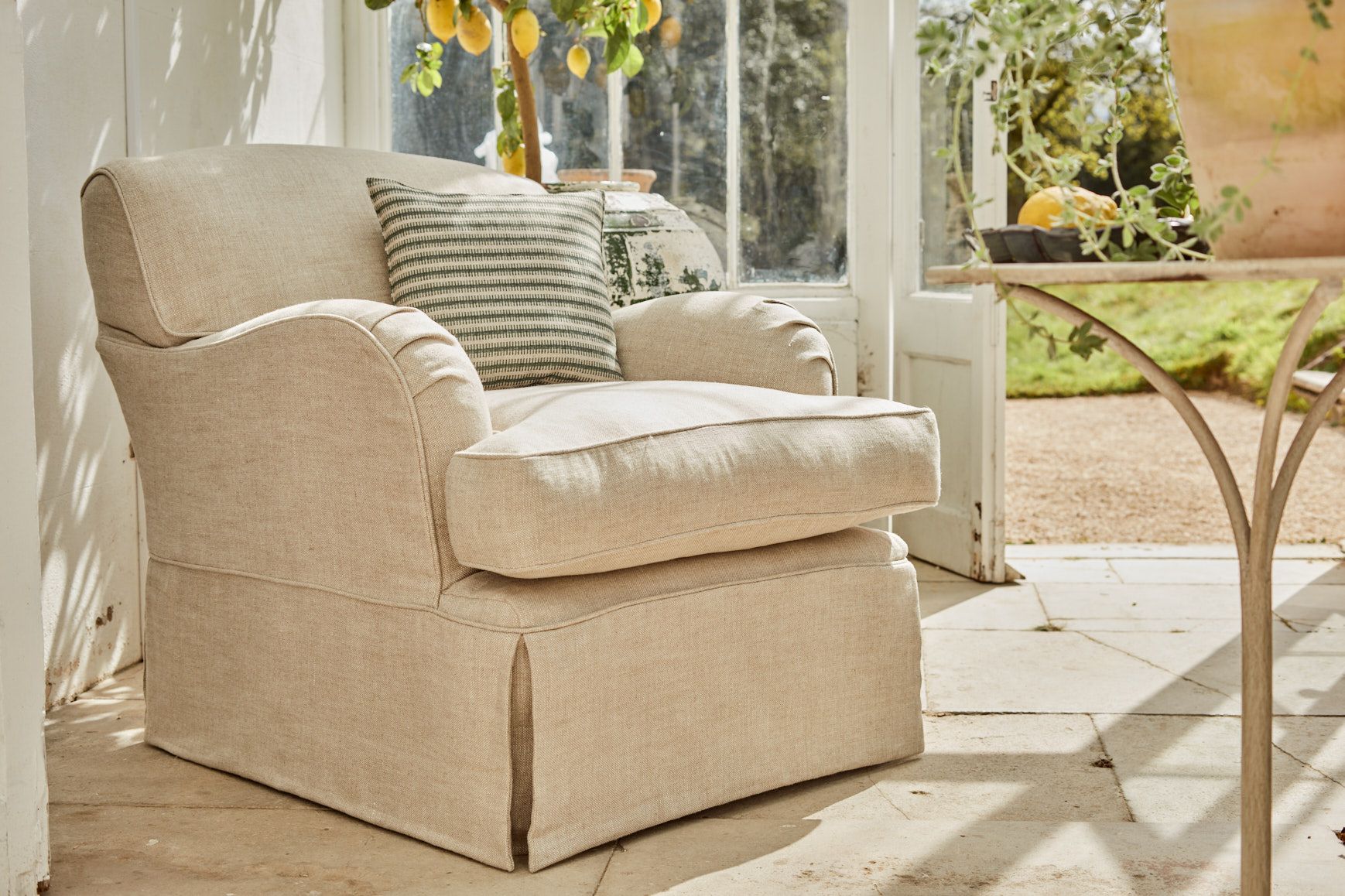
Velvet
Velvet is loved by our customers and is known for its sheen and tactility. Synthetic velvets are more hard-wearing, while natural velvets require a little more care and maintenance.
How to clean and care for velvet sofas: Both natural and synthetic velvet have a pile which can change the appearance of the fabric. When your sofa first arrives, brush it gently with a velvet brush or clothes brush to push the pile back up. Clean spills immediately and avoid getting the velvet fabric wet, as this can cause permanent damage.
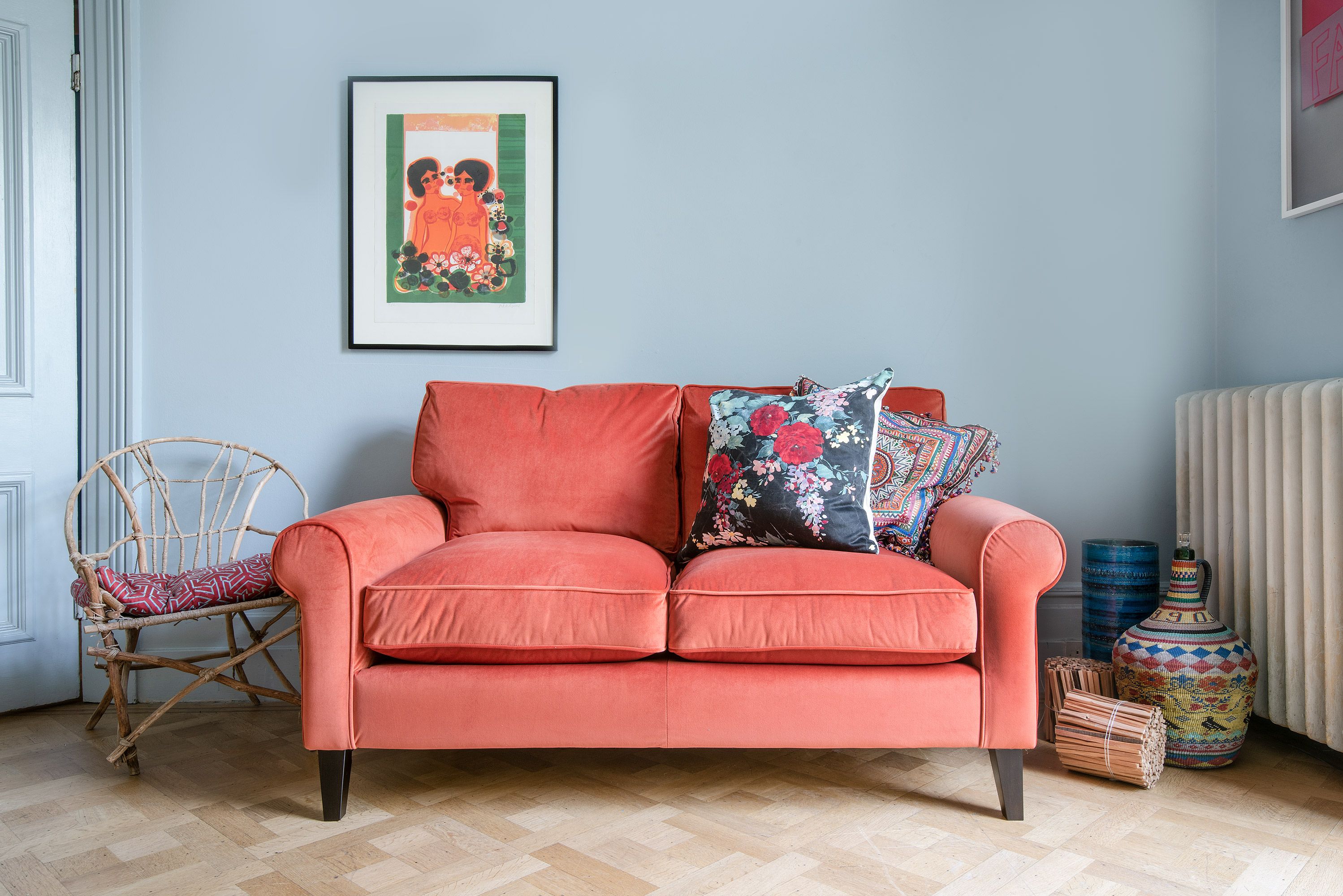
Leather
As a natural product, the grain of leather can vary from sofa to sofa, making every piece unique. It’s popular for its wipe-clean nature but can require some specific care.
How to clean and care for leather sofas: Using a leather cream will keep the material well-fed and avoid cracking. Dust on a weekly basis with a soft, clean cloth. Firm leathers soften over time and tend to look better with age.
Routine maintenance for your sofa
Including these routine sofa care and maintenance guidelines in your regular cleaning schedule at home can help keep your handcrafted piece in tip-top condition:
- One of the best ways to keep your sofa looking as good as new is to give it a clean with a vacuum or soft brush roughly on a weekly basis. Ensure to use a low setting and, ideally, an attachment intended for soft furnishings, hoovering up any crumbs, dust or lint.
- Wooden feet can be easily wiped clean with a damp cloth to remove dust, using a wood-friendly polish if preferred. They should also be tightened regularly to prevent loosening or buckling.
- If you find your fabric is pilling (a natural result of wear and tear), simply remove the bobbles with a dedicated pilling device.
- From time to time, we recommend having your sofa steam cleaned by a professional upholstery cleaning company, which will ensure that any fading is consistent across your whole sofa (compared to spot cleaning). Depending on your household, you might do so once or twice a year.
Cushion care
Your cushions are integral to the comfort of your sofa. Both seating cushions and scatter cushions require some care to keep them as comfortable as possible, but this can be dependent on their filling. Our guides below detail specific tips for each type of sofa cushion interior:
Regardless of cushion interiors, it’s best to avoid perching on the edge of your cushions as this can cause them to become misshapen over time.
Handling spills and stains
A considerable amount of time spent on the sofa involves having something to eat or drink in hand, be it a cup of tea, a slice of cake with our children, or indeed, a glass of wine with friends. And, with pets or little ones around the home, spills and stains are simply a part of owning a sofa.
Follow our guidance below to mitigate their impact as much as possible:
- Mop up any spillages as soon as possible to prevent the stain from worsening. Use a clean, dry cloth to do this.
- Avoid scrubbing or rubbing the spillage as this may damage the fabric and push the stain in further. Instead, use a gentle blotting motion.
- For fabrics such as linen and cotton, you might choose to slightly dampen the cloth and blot the stain from the outside inwards, using circular movements.
- Often, prevention is better than cure. While these fabrics might not be right for every home, our library does include a wide range of stain-resistant and easy-to-clean fabrics that are both beautiful and more resilient for busy homes.
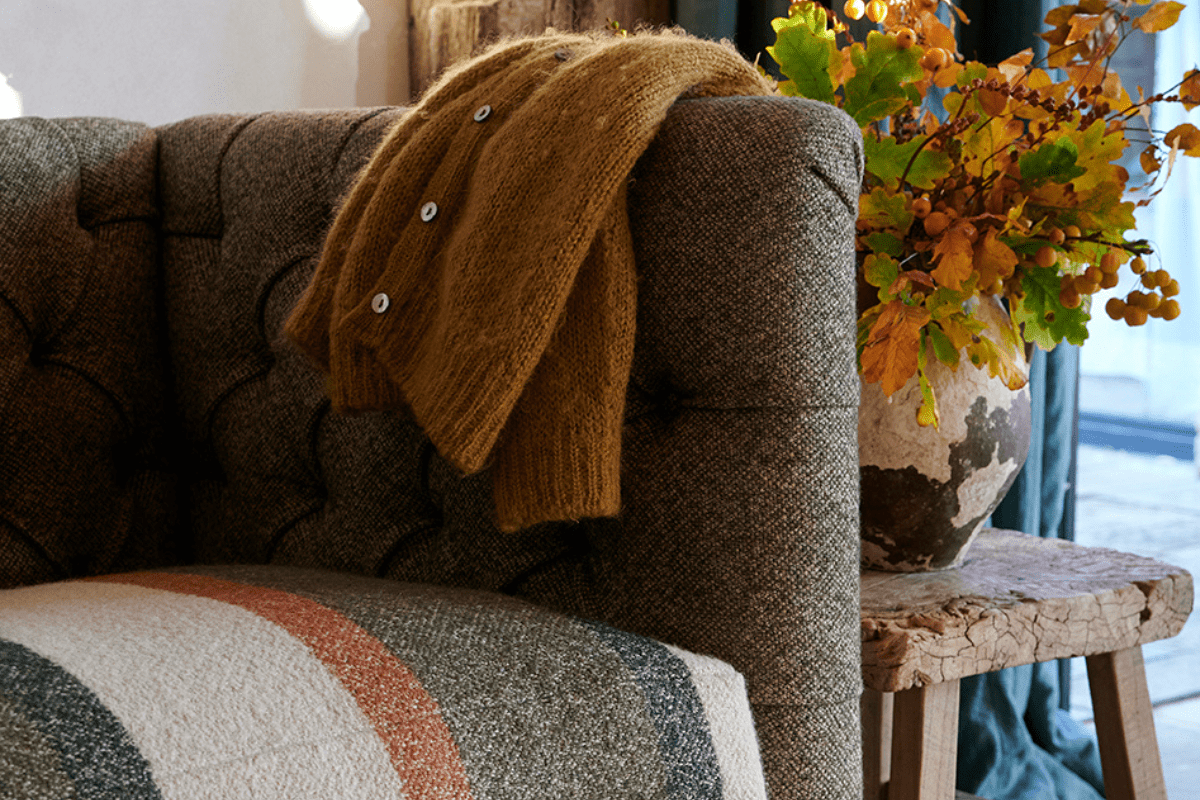
Staingard Protection
When you purchase your Sofas & Stuff sofa, we’d recommend adding Staingard Plus™ protection. Staingard™ offers 5 years’ protection against staining and accidental damage, provides a state-of-the-art cleaning kit and their nationwide technicians can come to your home to professionally treat tough stains.
This includes damage such as scratching or chewing from pets (covered up to three times in five years) and incidents such as spillages, stains and dents (covered as many times as needed in five years). To find out more, you can speak with our design consultants at your nearest showroom.

Protecting your sofa from damage
Beyond the maintenance of your sofa, these tips can help protect it from damage, preventing repairs or replacements down the line:
- To maintain the integrity of your sofa’s frame, it’s best placed on level flooring to avoid rocking. If you decide to move your sofa at any point, avoid dragging it and instead lift it into place.
- Lessen scratches on wooden floors by using foot pads or castor cups on the feet of your sofa.
- Use blankets or throws as a way to protect your sofa’s upholstery. For example, a blanket thrown over the back of your sofa can prevent staining from the back of the head. For light-coloured sofas, ensure that the blanket’s dye doesn’t transfer.
- If you opt to use specific furniture or upholstery cleaning products, testing them on a small, hidden patch of fabric can avoid larger issues.
- We would recommend keeping your new sofa out of direct sunlight to prevent fabrics from fading, particularly if you have chosen a linen or velvet upholstery fabric. Similarly, avoid placing your sofa near direct heat sources to reduce fading.
- Many households choose to keep pets off the sofa to avoid scratches or stray pet hairs. In cases where they are permitted, use a furniture brush to remove hair and wipe away stains as soon as you notice them. Our pet-friendly home design guide provides further advice.
- Be mindful of sharp rings, buckles and pet claws that can snag or puncture the fabric of your sofa.
- If your furniture has sustained scratches, dampen them with a slightly wet cloth, brush with a stiff clothes brush to push the pile into place, and then vacuum the area.
- You should never attempt to wash a loose cover or removable cushion covers. Many have a fire-retardant backing which will shred in the washing machine, and others may shrink or fade.
Tips for looking after sofa beds
Sofa beds come with a built-in pull-out mechanism and mattress, and as such require unique care and attention:
- Double-sided mattresses should be turned and rotated regularly if possible, preventing sagging with use.
- After use, remove the bed linen from the mattress to allow it to air.
- Avoid applying undue pressure when pulling the mattress in and out. The mechanism is designed to pull out smoothly, so do check for anything blocking the way if you are having trouble.
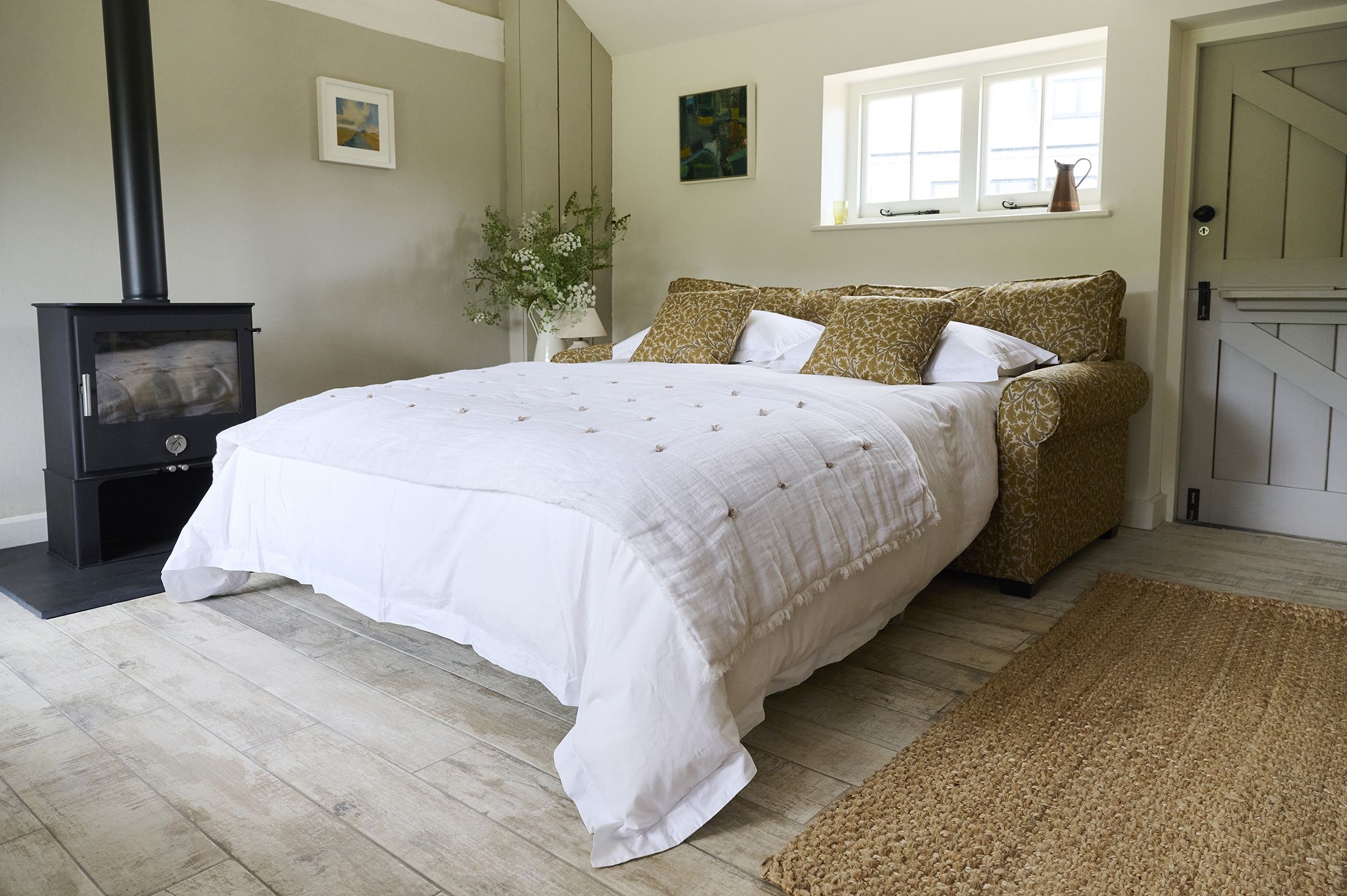
Tips for looking after beds and mattresses
Many of the tips for our upholstered sofas apply to our upholstered bed frames also. In fact, specific maintenance for your bed is mainly needed for your mattress:
- As with our sofa beds, turn and rotate your mattress on a regular basis to reduce the effects of natural settlement from body pressure. Our design consultants will be able to help you understand if your mattress needs turning, rotating, or both – or you can refer to the care instructions.
- If possible, air your mattress for around 20 minutes on a daily basis – and for slightly longer, up to a few hours, on a weekly basis – to circulate the air. On a sunny day, opening windows whilst doing this will help.
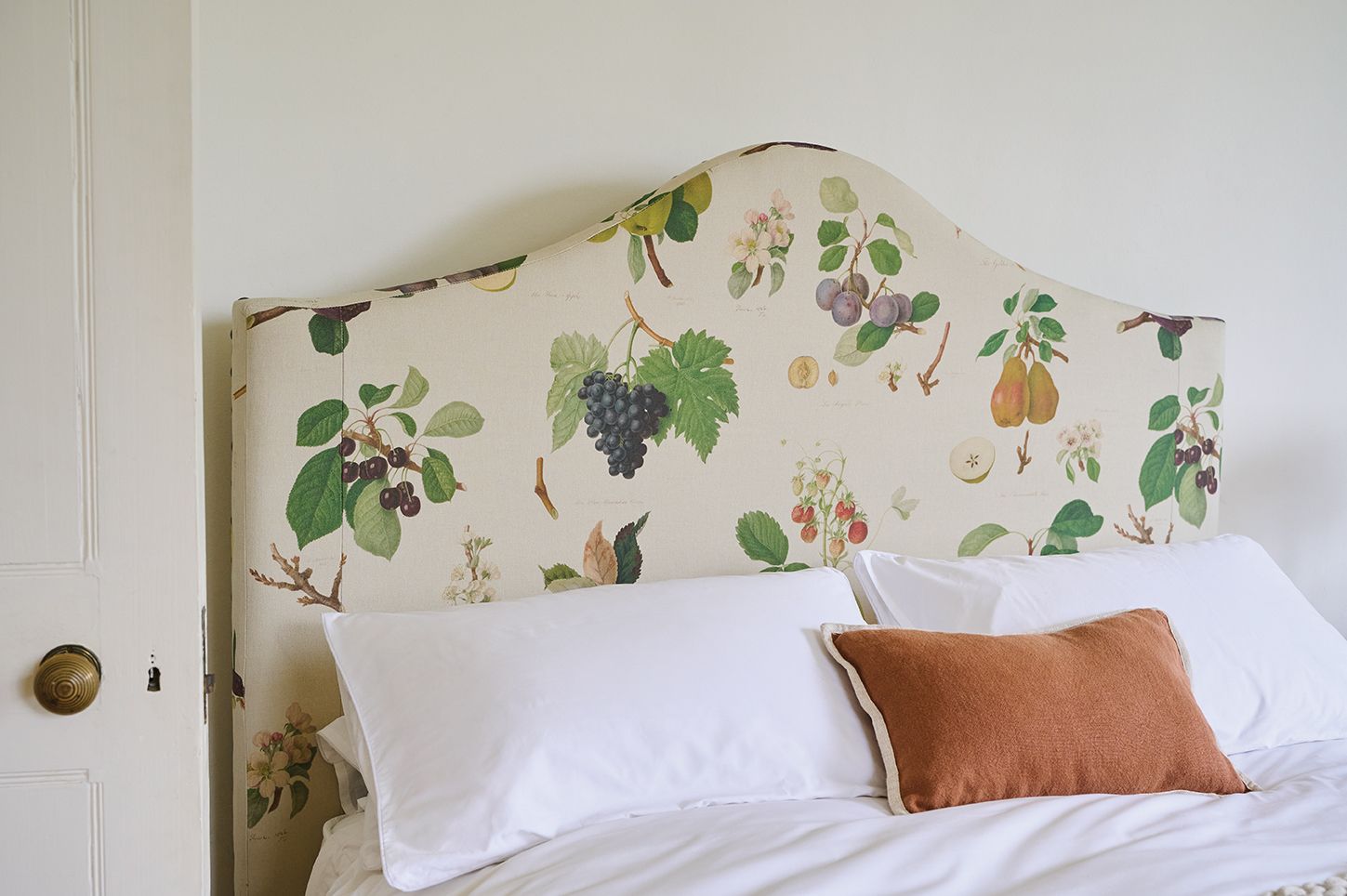
Preserve and protect your Sofas & Stuff furniture
Caring for your Sofas & Stuff furniture ensures it remains an integral part of your home’s beauty and functionality for the future. By following these simple sofa cleaning and maintenance tips, you can preserve the charm of your bespoke pieces and protect your investment.
For personalised advice on how to clean your fabric sofa or bed, and to explore our range of custom-made furniture in more detail, we invite you to visit your nearest showroom. Our expert design consultants will advise you on how to keep your furniture looking exquisite and feeling supremely comfortable, reflecting our promise of lasting quality.

